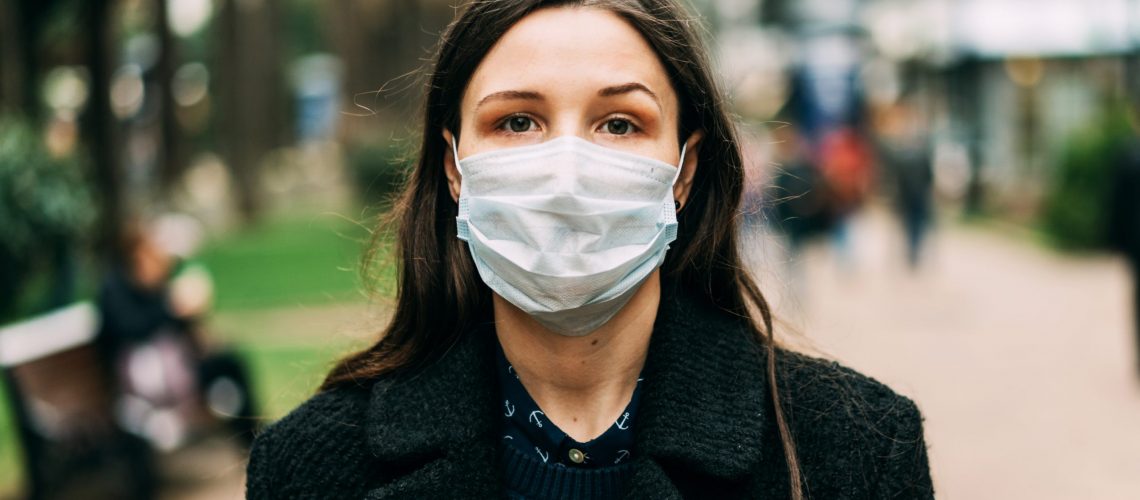Face Masks for Electric-field generating fabric, already approved for wound care, appears to destabilize coronavirus particles, so they are unable to infect cells.
Now, engineers at Indiana University demonstrate for the first time a new technique for masks. A fabric generating a weak electric field can inactivate coronaviruses. The electroceutical material, described in a ChemRxiv preprint that has not yet been peer-reviewed, could be used to make face masks and other personal protective equipment (PPE), the authors say.
The fabric was tested against a pig respiratory coronavirus & human coronavirus. It has not yet been verified against SARS-CoV-2, the virus that causes COVID-19.
“The work is of interest for the scientific community; it will open new search to provide smart solutions to overcome the COVID-19 pandemic,” says Mahmoud Al Ahmad, an associate professor of engineering at the University of United Arab Emirates. He was not involved in the research. While the concept will require more development before being applied to PPE, he says, “it is an excellent start in this direction.”
Beyond masks, the findings raise the possibility of using weak electrical fields to curb the spread of viruses in many ways, such as purifying the air in shared spaces or disinfecting operating room surfaces. Coronavirus is not the first or last virus that is going to disrupt our lives. Think about bigger and broader approaches to utilize weak electric fields against virus infectivity.
Sen’s lab has been codeveloping electroceutical fabric technology. It is under the proprietary name V.Dox Technology, with Arizona-based company Vomaris for the past six years. Sen retains a financial stake in the company.
The face masks fabric technology consists of a matrix pattern of silver and zinc dots that act as batteries when exposed to moisture, forming a weak electric field.
The technology consists of a matrix pattern of silver and zinc dots printed onto a material, such as polyester or cotton. The dots form a battery generating a weak electric field: When exposed to a conductive medium, like gel or sweat, electrons transfer from the zinc to the silver in a REDOX reaction, generating a potential difference of 0.5 volts. The technology is FDA-cleared and commercialized for wound care, where it has been shown to treat bacterial biofilm infections.
To be used in masks, moisture will need to be applied in some fashion. According to Sen, approaches could include embedding a hydrogel, so it activates the dots or inserting liquid-filled piping on the periphery of the mask. Moisture from exhaled air will continue to keep the fabric moist.
When the COVID-19 pandemic started, Sen and his team began to wonder if the technology might affect viruses as well as bacteria. Past work in the literature suggested coronaviruses rely on electrostatic forces for attachment and genome assembly, and Sen hoped an electric field would disrupt those forces and therefore kill the virus.
IU geneticist Kenneth Cornetta is who has performed some of the initial virus experiments in his laboratory. The team exposed a pig respiratory coronavirus to the electroceutical fabric for 1 or 5 minutes. After one minute, they found evidence that the virus particles had begun to destabilize and aggregate, becoming more substantial than before exposure. That suggests the weak electric field was causing “damaging structural alterations to the virions,” the authors write.

The electroceutical surface technology, called V.Dox Technology, is a proprietary dot-matrix pattern of embedded microcell batteries that create an electric field and wirelessly generate a low level of electricity when moist.
The electroceutical fabric consists of a dot matrix of silver and zinc nanoparticles that act as batteries when exposed to moisture.
Next, the team tested the virus particles exposed to the fabric against cells in a dish. “The infectivity was gone,” says Sen.
The results indicate “promise for this strategy,” says Murugappan Muthukumar, a professor of polymer science and engineering at the University of Massachusetts Amherst, who was not involved in the study. “The authors’ hypothesis that the electrostatic forces within the virus particles and between the virus particles and the fabric are important is correct and is an excellent idea.”
Still, Muthukumar notes, it is difficult to extrapolate how the electric field affects the viral genome, and more work needs to be done to investigate the effects observed in the paper.
Since publishing the preprint, the team also tested the fabric against human coronavirus 229E, a cause of upper respiratory tract infections, and got similar results, adds Sen.

The team has submitted the data to the FDA in the hopes of receiving Emergency Use Authorization to use the fabric in face masks. The technology could even be incorporated into the manufacturing of N95 covers or as an insert, says Sen.
Vomaris currently sells its wound-dressing kits for between US $38 and $69 online. Sen says the technology is inexpensive to manufacture and could be used in PPE at a modest cost.
Independent of Vomaris, Sen’s laboratory is developing a tunable electroceutical called patterned electroceutical dressing. The field strength can be altered depending on need. The dressing has shown to be safe for patients with wounds, says Sen, and is currently in clinical testing.

